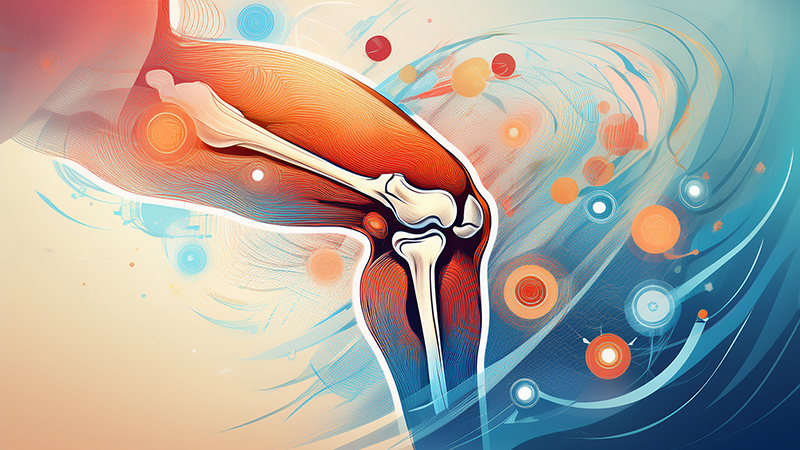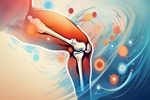
Knee osteoarthritis (OA) is a common degenerative joint condition that affects millions of people worldwide. It develops gradually, leading to pain, stiffness, and decreased mobility. While no single test can definitively diagnose knee osteoarthritis, physicians use a combination of patient interviews, physical exams, and diagnostic imaging to confirm the condition.
Diagnosing Knee Osteoarthritis
Patient Interview
A doctor will ask about family history, symptom onset, pain patterns, knee swelling, and lifestyle impact. Understanding what makes the pain better or worse helps in diagnosis and treatment planning.
Physical Examination
The physician will examine the knee for swelling, pain points, stiffness, and range of motion. The evaluation extends above and below the knee to rule out referred pain from the lower back or hips.
Diagnostic Testing
- X-rays: Reveal joint space loss, bone spurs, and cartilage deterioration.
- MRI: Provides detailed imaging of soft tissues, including ligaments and tendons, but is typically reserved for unclear cases.
- Lab Tests: Used to rule out infections, gout, or other conditions that may mimic osteoarthritis symptoms.
Risk Factors for Knee Osteoarthritis
While the exact cause of knee osteoarthritis is unknown, certain factors increase the likelihood of developing the condition.
Primary Risk Factors
- Advanced Age: OA prevalence increases after age 45 due to joint wear and cartilage thinning.
- Excess Weight: Being overweight significantly raises the risk of knee osteoarthritis due to added stress on the joints.
Additional Risk Factors
- Joint Trauma: Previous injuries, fractures, or surgeries can lead to post-traumatic arthritis.
- Family History: Genetics play a role, with some individuals inheriting a predisposition for OA.
- Congenital Defects & Illnesses: Conditions such as gout, metabolic disorders, and poor bone alignment increase OA risk.
- Occupational & Athletic Stress: Jobs or sports requiring heavy knee use can accelerate joint degeneration.
- Gender: Women are more likely than men to develop knee osteoarthritis.
Symptoms of Knee Osteoarthritis
Knee osteoarthritis symptoms progress gradually and may initially be mistaken for aging-related discomfort. Recognizing symptoms early can help slow the disease's progression.
- Knee Pain: Ranges from intermittent discomfort to chronic pain, often worsening with activity.
- Stiffness: Reduced flexibility and range of motion, especially after periods of inactivity.
- Swelling: Fluid buildup in the knee due to joint irritation.
- Popping or Crunching Sounds: Indicative of cartilage damage.
- Knee Buckling or Locking: May occur due to uneven cartilage surfaces or loose fragments in the joint.
Non-Surgical Treatment Options
While knee osteoarthritis is a degenerative condition, various treatments can help manage pain and improve function.
- Regenerative Medicine: Stem cell therapy and Platelet Rich Plasma (PRP) treatments offer potential pain relief and healing.
- Physical Therapy & Exercise: Strengthening surrounding muscles improves knee stability and function.
- Activity Modification: Low-impact exercises like swimming or cycling reduce knee strain.
- Rest & Ice/Heat Therapy: Helps alleviate pain and inflammation.
- Weight Management: Reducing excess weight significantly lessens knee joint stress.
Stages of Knee Osteoarthritis
Knee osteoarthritis progresses in five stages, from normal knee health (Stage 0) to severe OA (Stage 4).
- Stage 0: No signs of osteoarthritis; no treatment necessary.
- Stage 1 (Minor OA): Small bone spurs develop; minimal to no pain. Supplements or lifestyle changes may help.
- Stage 2 (Mild OA): More noticeable bone spurs; occasional pain and stiffness. Non-drug treatments such as exercise, weight management, and knee braces can provide relief.
- Stage 3 (Moderate OA): Cartilage damage becomes evident; frequent pain and swelling occur. Treatments include pain medication, cortisone injections, and viscosupplementation (hyaluronic acid injections).
- Stage 4 (Severe OA): Extensive cartilage loss, joint pain, and restricted mobility. Treatment options include osteotomy (bone realignment surgery) or total knee replacement.
Surgical Treatment Options
When non-surgical treatments no longer provide relief, surgical intervention may be necessary.
- Osteotomy: A realignment procedure to shift weight away from damaged areas of the knee.
- Total Knee Replacement: The damaged joint is replaced with a prosthetic implant. While effective, it requires extensive rehabilitation and carries surgical risks.
Conclusion
Knee osteoarthritis is a progressive condition, but early intervention can significantly improve quality of life. Recognizing risk factors, symptoms, and treatment options can help individuals manage the disease effectively and maintain joint function for as long as possible.
Precision Pain Care and Rehabilitation has two convenient locations in Richmond Hill – Queens, and New Hyde Park – Long Island. Call the Queens office at (718) 215-1888 or (516) 419-4480 for the Long Island office to arrange an appointment with our Interventional Pain Management Specialists, Dr. Jeffrey Chacko or Dr. Sonny Ahluwalia.
Note: This article is for informational purposes only and should not be considered medical advice. Consult a healthcare professional for personalized recommendations.















